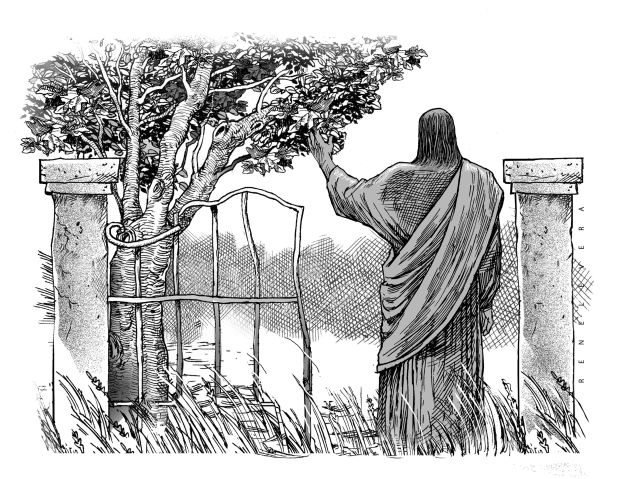
Every time we travel, the wife and I calculate the kind of weather that awaits us in the city from the appearance of the sky, as well as of the mountains on the left and of the sea on the right. Dark clouds with threads that reach the land or sea mean rain, especially if lightning and thunder accompany them. Any break in the clouds, marked by shafts of light, signifies fair weather over an area, the size of which depends on the size of the opening.
The wife and I often find ourselves right in our meteorological predictions, although, at times, upon arriving in the city we discover the exact opposite – dry heat instead of wet coolness, the harsh, twisted noise of traffic, which nonetheless qualifies as silence compared to the rumble and crash of thunder.
We observe not just the sky, mountains and sea. We likewise take note of the trees, which may serve as wind cone and weather vane, telling us about the gustiness, its direction and its strength (this last, during a storm, not just with leaves and branches, but likewise with bodies that double up, sometimes to the extent of snapping).
I realize that observations like this have a basis in the Gospels. “Learn a lesson from the fig tree,” Jesus said in the Gospel of Mark. “When its branch becomes tender and sprouts leaves, you know that summer is near,” he continued.
Actually, Jesus was speaking of cataclysms – the sun and moon going dark, the stars falling from the sky, “the powers in the heavens” shaking: natural signs that would presage the arrival of the Son of Man, who would come in the clouds with great power and glory, who would then “send out the angels and gather his elect from the four winds, from the ends of the earth to the ends of the sky.”
I think that Jesus meant, when he advised his disciples to “learn a lesson from the fig tree,” that, just as they could tell meteorological events from observing the behavior of nature, they should find in the cataclysms, in the upheavals, that the Son of Man, Christ himself, is near, “at the gates.”
Incidentally, I take these cataclysms and upheavals as occurrences in both outer and inner weather.
At one time, before they put up the lights along the long, winding road that hems the sea, which road only a few people then took for fear of their vehicles breaking down with no possibility of outside help, at a lonely spot unreached by electronic communication, despite this we chose the route for our trip home during a night of Sturm und Drang, in the midst of a dreadful thunderstorm. The rain fell with such force and volume that, although we had the windshield wiper and the lights full on, we could not see the road and relied only on what appeared of it with every flash of lightning, which continuously, after every five seconds, ripped the air ahead of us with an ear-splitting thunder. We would have made innumerable signs of the cross if we followed the advice of the folk, that we should do so every time with every lightning flash. But in our fear we found one sufficient, which we hurriedly made. Our hearts in our mouths, we called on God for help with one, quavering voice.
We made it. As we drove through that monstrous storm, I should have remembered Christ’s words, “When you see these things happening, know that I am near, at the gates.” Because that night he truly was.